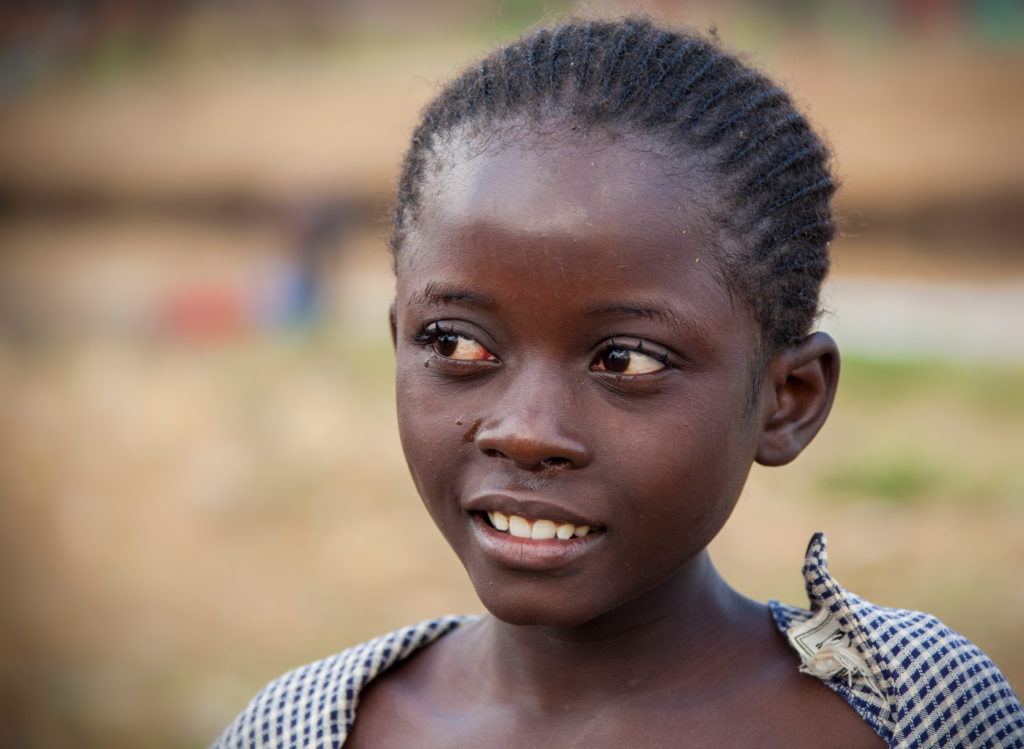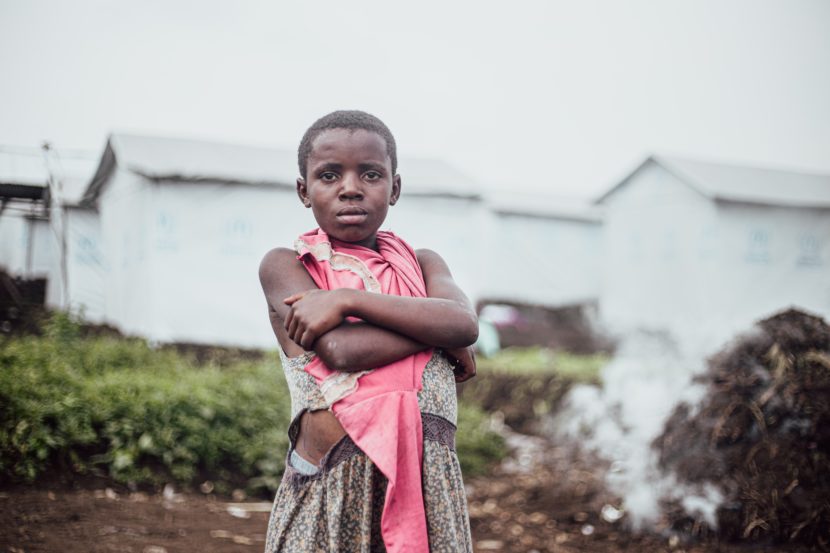For more than thirty years, the conflict in the DRC has cost the lives of more than six million people, including countless children. Since 2024, with the significant intensification of the conflict, it is appropriate to report the impact of these conflicts on the rights of children, as well as the violations and systemic dysfunctions that children face in this hostile environment. It is also important to emphasise the role of peace building and long-term humanitarian aid.
The chronology of conflicts in the DRC
In the aftermath of the Rwandan genocide, more than a million Hutus crossed the border between Rwanda and Congo (now Zaire) to settle in camps in North Kivu. In these camps there were civilians, but also genocidaires, who contributed to the creation of the Democratic Forces for the Liberation of Rwanda (FDLR). In 1996, deadly massacres took place there, marking the start of the Congolese rebellion supported by Kigali, which brought Laurent-Désiré Kabila to power in May 1997. Between 1998 and 2002, the country, which had become the Democratic Republic of Congo (DRC) in 1997, experienced a regional war involving up to 7 countries (Journal 20 Minutes, 2008).
The two main Congolese rebellions are the Congo Liberation Movement (MLC), supported by Uganda, and the Tutsis of the Congolese Rally for Democracy (RCD), supported by Rwanda, which, following a territorial redistribution, administer the North Kivu area, coveted for its mining and land wealth. Since becoming the leader of the DRC in 2001, Joseph Kabila established the National Congress for the Defense of the People (CNDP) in 2006 to bring peace to the country. This also led, in January 2007, to the resumption of control of the territories rich in minerals that he had previously coveted.
However, fighting resumed between the CNDP and the Congolese army until the Goma conference and the ceasefire agreement signed in January 2008. Despite these agreements, which have been regularly violated, a long period of instability and violence took hold, until the signing of a new peace agreement in Goma in 2009 (Journal 20 Minutes, 2008). However, Rwanda’s non-participation in the peace process further exacerbated antagonisms between the military groups involved in the Kivus.
In this context, the March 23 Movement armed group (M23) was formed in 2012 and subsequently took up arms against the DRC armed forces (Slate, 2024). Since June 2024, M23 has taken control of a central city amid its conflict with government forces in eastern DRC, continuing the eternal clashes that overwhelm the country (Le Monde, 2024).
The reality for children in the DRC
Since the start of hostilities, the situation in the DRC has only got worse and the impact of these armed conflicts on children is serious and permanent. In 2022, 3,400 cases of serious violations committed against children were recorded in the DRC, including 1,600 children recruited by armed groups, 700 killed in the conflict, and at least 290 cases of sexual violence. Furthermore, since the start of 2023, more than a million people have been newly displaced in the DRC, bringing the total number of displaced people to over 6.1 million (BBC News Africa, 2023).
In 2024, a report indicated that 36% of murders and mutilations of children, 25% of acts of sexual violence against children, 18% of cases of recruitment/use of children in combat, and 19% of child abductions occurred. These serious violations were recorded for the most part (87%) within combat zones. In addition, acts of sexual violence against women and children remained numerous in 2023 and increased further in 2024. In May, 150 cases of gender-based violence were recorded, among them, 114 rapes (UN Info, 2024).
This upsurge in violence in eastern DRC, which has led to the displacement of at least 400,000 people in North Kivu since the start of 2024 alone, threatens children with increased violence if their protection is not strengthened (UNICEF, 2024). Over time, the level of violence has continued to rise, with an increase of almost 5% in violations and abuses occurring since April 2024 alone. This increase could be attributed to the continued clashes between the M23 and other armed groups with the Armed Forces of the DRC (FARDC) in the southeastern part of Masisi and the northern part of Rutshuru (UN News, 2024).
The DRC’s obligations towards children
Since the 1990s, the DRC has consolidated its legal framework for the protection of children’s rights through the adoption and ratification of international and regional protection instruments, notably the Convention on the Rights of the Child (CRC) as well as the African Charter on the Rights and Welfare of the Child (Ponabana DRC, 2024). In order to implement the commitments made during the ratification of the CRC, the DRC has reformed several legal instruments at the national level, including the labour code, the military justice code and the family code (UNICEF, 2019).
Indeed, the DRC has made continuous efforts to place the best interests and well-being of children at the heart of its Constitution, which defines a child as “any person, without distinction of sex, who has not yet reached 18 years of age” (Constitution of the DRC, 2011).
In addition, the DRC has reinforced its legal framework for the defense of children’s rights, in particular by promulgating the law on the protection of children in 2009, by punishing sexual violence in Law No. 06/019 modifying and supplementing the decree establishing the Criminal Procedure Code of 2006, and revising the Family Code in 2016 (Ponabana RDC, 2024). However, these legislative efforts are not sufficient, given the scale of the impact of armed conflicts on the rights of children.
Structural issues in perspective

Given the repercussions of violence suffered by children in the DRC, briefly listed above, it is appropriate to pay particular attention to the obstacles that hinder the realisation by children of their rights. One of the challenges is that the DRC’s human capital index stands at 0.37, which is below the sub-Saharan African average of 0.40.
This means “that a Congolese child born today can only hope to realise 37% of his potential, compared to what would have been possible if he had benefited from complete and quality schooling, and optimal health conditions” (World Bank, 2024). This result largely reflects “the low survival rate of children under five, the high rate of child stunting and the poor quality of education” (World Bank, 2024).
Secondly, the implementation of an environment favourable to children’s rights in the DRC requires increasing budgetary allocations and public spending in favour of social sectors that address the needs of children, who are considered the most vulnerable. This can only be achieved through “effective tax revenue collection, a responsible tax policy, a decisive fight against corruption at all levels, and budgetary allocations to benefit social sectors, in particular health and education”, whose growth must be at least equal to that of the economic sector (UNICEF, 2017).
In view of the above, priority must be given to structural changes, taking into account the long-term consequences of armed conflicts on the well-being of children, in order to provide them with the best possible environment to grow fully and realise their aspirations.
The solutions expected in the DRC
In response to the aftermath of armed conflicts in the DRC and their successive escalations, on August 6, 2024, the Security Council adopted a resolution “authorising the United Nations Organisation Stabilisation Mission in the Democratic Republic of the Congo (MONUSCO) to support the Southern African Development Community Mission in this country (SAMIRDC)”, which has been active in the DRC since 2023 (UN Press, 2024).
It is essential that regional actors and the international community redouble their efforts to achieve a peaceful political solution to the conflict to achieve a lasting peace agreement for children, who represent more than half of the total population of the country, and for their fundamental rights (UNICEF, 2024).
This approach also requires collaboration and pooling of efforts between different sectors and their stakeholders to ensure a joint approach and assessment of humanitarian needs and resource mobilisation (OCHA, 2024). Despite some progress made over the past ten years, the fate of children and women in the DRC remains precarious. Unfortunately, the specific needs of children and adolescents are rarely given priority.
Children and adolescents are not only the beneficiaries of services provided to deal with the difficulties they experience, they also play an active role in the process intended to improve their well-being and are the guarantors of the country’s future. By applying this principle, in accordance with the degree of maturity of each child, it is possible to promote the right of each child and adolescent to participate, while creating an environment that supports their development (UNICEF, 2017).

Humanium, through its own projects, strives to create a world where children’s rights to life and protection are always respected. If you would like to contribute to Humanium’s cause, you may consider donating, volunteering, or becoming a member.
Written by Moïra Phuöng Van de Poël
Translated by Adrian Ordinana Salvador
Revised by Jean-Christophe Brunet
Bibliography:
BBC News Afrique (2023, 14 octobre). Le pire endroit au monde pour être un enfant. Extrait de BBC News Afrique disponible sur https://www.bbc.com/afrique/articles/cg3e87nlm2go, consulté en août 2024.
Banque mondiale.(2024, 11 avril). République démocratique du Congo – Vue d’ensemble. Extrait de Banque mondiale disponible sur https://www.banquemondiale.org/fr/country/drc/overview, consulté en août 2024.
Constitution de la RDC (2011). Article 41. Extrait de la Constitution de la RDC disponible sur https://www.leganet.cd/Legislation/JO/2011/JOS.05.02.2011.pdf, consulté en août 2024.
Journal 20 Minutes (2008, 21 novembre). La chronologie du conflit en République démocratique du Congo. Extrait du Journal 20 Minutes disponible sur https://www.20minutes.fr/monde/274324-20081121-chronologie-conflit-republique-democratique-congo, consulté en août 2024.
Le Monde (2024, 29 juin). En RDC, la rébellion du M23 s’empare d’une ville stratégique dans l’est. Extrait de Le Monde disponible sur https://www.lemonde.fr/afrique/article/2024/06/29/en-rdc-la-rebellion-du-m23-s-empare-d-une-ville-strategique-dans-l-est_6245418_3212.html, consulté en août 2024.
OCHA (2024, février). Plan de réponse humanitaire en RDC. Extrait d’OCHA disponible sur https://www.unocha.org/publications/report/democratic-republic-congo/rep-dem-du-congo-2024-plan-de-reponse-humanitaire-en-un-clin-doeil#:~:text=Le%20Plan%20de%20r%C3%A9ponse%20humanitaire,8%2C7%20millions%20de%20personnes., consulté en août 2024.
ONU Info (2024, 10 juin). RD Congo : la majorité des abus contre les enfants au Nord Kivu notée dans les zones de combat (HCR). Extrait d’ONU Info disponible sur https://news.un.org/fr/story/2024/06/1146291#:~:text=Pour%20le%20seul%20mois%20d,ont%20encore%20augment%C3%A9%20en%202024., consulté en août 2024.
Ponabana RDC (2024). Le cadre légal des enfants en République Démocratique du Congo. Extrait de Ponabana RDC disponible sur https://ponabana.com/textes-legaux/, consulté en août 2024.
Press ONU. (2024, 6 août). RDC: le Conseil de sécurité autorise la MONUSCO à soutenir la Mission de la Communauté de développement de l’Afrique australe en RDC. Extrait de Press ONU disponible sur https://press.un.org/fr/2024/cs15785.doc.htm#:~:text=Cet%20apr%C3%A8s%2Dmidi%2C%20le%20Conseil,soutenir%20la%20Mission%20de%20la, consulté en août 2024.
Slate (2024, 22 février). RDC: tout comprendre sur la guerre dans le Kivu et ses racines profondes. Extrait de Slate disponible sur https://www.slate.fr/story/265888/republique-democratique-congo-rdc-causes-guerre-nord-kivu-m23-rwanda-genocide-kagame-coltan-geopolitique, consulté en août 2024.
UNICEF (2019, 18 novembre). Les 30 ans des droits de l’enfant : des progrès historiques et des résultats indéniables, qui profitent toutefois peu aux enfants les plus pauvres du monde. Extrait d’UNICEF disponible sur https://www.unicef.org/drcongo/communiques-de-presse/30-ans-droits-enfant-progres-resultats#:~:text=Le%2027%20septembre%201990%2C%20soit,de%20l’%C3%A9galit%C3%A9%20des%20chances., consulté en août 2024.
UNICEF (2024, 22 mars). RDC : les enfants déplacés en proie à de nombreux dangers. Extrait d’UNICEF disponible sur https://www.unicef.fr/article/rdc-les-enfants-deplaces-en-proie-a-de-nombreux-dangers/, consulté en août 2024.
UNICEF (2024, 14 mai). RDC : L’UNICEF appelle à la paix. Extrait d’UNICEF disponible sur https://www.unicef.fr/article/rdc-unicef-appelle-a-la-paix/, consulté en août 2024.
UNICEF (2017). République Démocratique du Congo, Développement de l’enfance. Extrait d’UNICEF disponible sur https://www.unicef.org/drcongo/ce-que-nous-faisons/d%C3%A9veloppement-de-lenfance#:~:text=Les%20enfants%20et%20adolescents%20repr%C3%A9sentent,des%20agents%20de%20changements%20positifs., consulté en août 2024.


